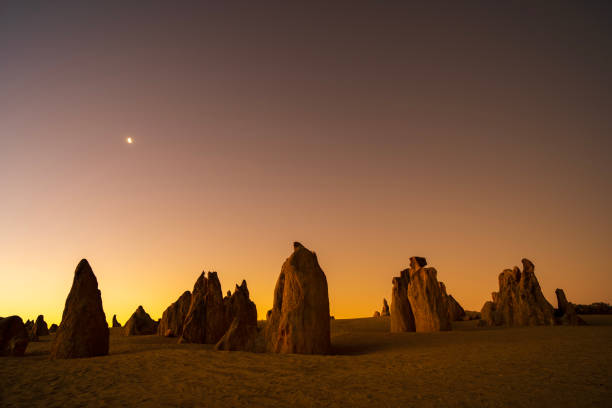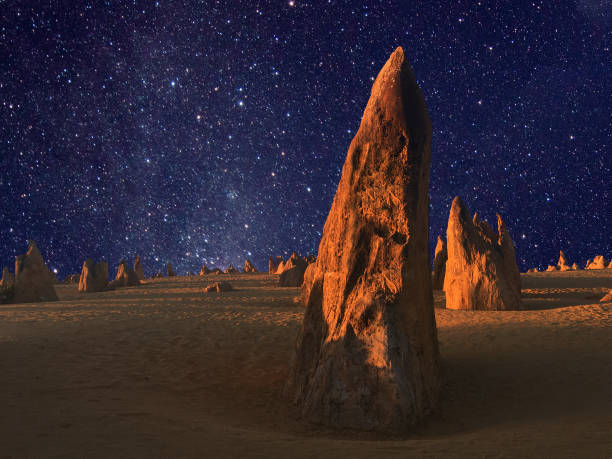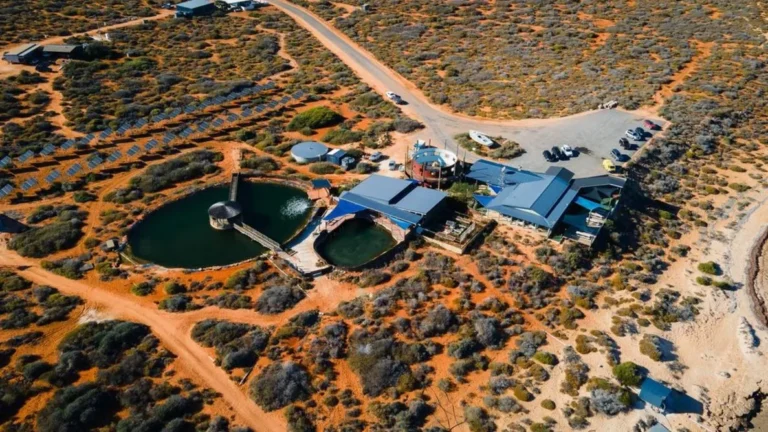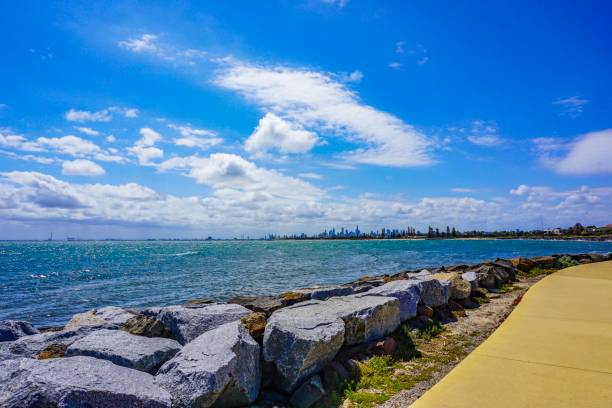Nestled in the heart of Western Australia, the Pinnacles Desert offers one of the most mesmerizing stargazing experiences on Earth. Far from the light pollution of cities, its dark skies provide a brilliant canvas for the stars and planets to perform their nightly ballet. This article will guide both novice and seasoned astronomers through everything needed to revel in the celestial wonders above the Pinnacles. From preparation to conservation, find out how to witness and capture astronomical phenomenons at this unique locale.
Preparing for Your Stargazing Adventure

Successful stargazing begins with good preparation. Venturing into the Pinnacles for an unrivaled peek into the cosmos requires some essential items and knowledge about the best conditions for stargazing.
What to bring: Be sure to pack warm clothes, as the desert can get cold at night, a comfortable chair or blanket, a reliable flashlight with a red filter to protect your night vision, and, of course, binoculars or a telescope if available. Snacks and water are also a good idea, as stargazing can be a waiting game.
When to visit: The best times for stargazing are generally during the new moon when the sky is darkest. The Pinnacles are open year-round, but the clearer winter months offer the best chance for an unobstructed view of the Milky Way.
The role of weather: Clear skies are crucial for a good stargazing experience. Keep an eye on the weather forecast and try to plan your trip around the absence of cloud cover to ensure the most transparent view of the night sky.
Charting the Cosmos: Understanding What You’ll See
The night sky above the Pinnacles is alive with astral activity. Stars, planets, and even the occasional meteor shower are visible to the naked eye. Identifying these celestial bodies, however, requires a bit of knowledge and help.
Constellations like the Southern Cross and Orion are visible at different times of the year. To help identify these and other celestial spectacles, bring along a star chart or download one of the many stargazing apps available. These tools are invaluable for navigating the heavens above.
The table below provides a glimpse into some seasonal highlights you might encounter on your stargazing journey at the Pinnacles.
| Season | Celestial Highlights | Visibility |
|---|---|---|
| Spring | Southern Cross, Eta Aquarid meteor shower | Good |
| Summer | Orion Nebula, Geminid meteor shower | Excellent |
| Autumn | Magellanic Clouds, Orion’s Belt | Fair |
| Winter | Milky Way Core, Scorpius constellation | Best |
Navigating the Pinnacles for the Best Stargazing Spots

To experience the best stargazing at the Pinnacles, you’ll want to find the perfect spot. The desert’s limestone formations create a dramatic backdrop for night-sky photography and celestial observation.
- Lookout points along the main driving trail offer quick access to expansive views of the sky.
- The open areas between the Pinnacles are less obstructed, allowing for a more immerses experience.
While exploring the area, it’s important to be cautious and respectful of the environment, staying on designated trails and using soft lights to navigate. Additionally, Pinnacles tours can be a great way to get your bearings and find hidden gems with the help of knowledgeable guides.
Remember the key to minimizing light pollution: use red lights and avoid pointing white light up into the sky or at other stargazers.
For the safety-conscious, share your plans with someone before heading out and keep a charged mobile phone with you for emergencies.
Joining the Community: Stargazing Events and Gatherings
Embracing the communal aspect of stargazing can enhance your experience. The Pinnacles host a variety of astronomy events throughout the year, from casual stargazing gatherings to more structured Pinnacles tours and observation nights.
Notable annual meteor showers, such as the Perseids and the Geminids, are communal favorites. These events typically peak over several nights, providing ample opportunity for everyone to catch a glimpse of falling stars. To ensure a spot, consider joining a tour or registering for an event in advance if necessary.
Here are the renowned meteor showers you can witness at the Pinnacles:
- The Quadrantids – January
- The Perseids – August
- The Geminids – December
Capturing the Night: Astrophotography for Beginners
Astrophotography can be an exhilarating way to document your stargazing experience. With some basic equipment and techniques, you can take stunning photos of the Pinnacle’s night sky.
Basic equipment: To start, you will need a camera capable of long exposures – typically a DSLR or a mirrorless camera. A sturdy tripod is essential to prevent camera shake during the long exposures necessary for capturing the night sky.
Techniques: Begin with a wide-angle lens to capture as much of the sky as possible. Start experimenting with long exposures; anywhere from 10 to 30 seconds is a good starting point. Adjust the ISO and aperture settings to find the right balance for your conditions.
Camera settings: Turning off autofocus and using manual focus will be crucial, as most cameras struggle to autofocus in low light conditions. Set the focus to infinity and take a few test shots to ensure sharpness.
Remember, capturing the night sky is as much an art as a science. Be patient, experiment, and most importantly, enjoy the process.
Protecting the Night: Conservation Efforts at the Pinnacles
The brilliant night skies at the Pinnacles are a treasure that requires diligent conservation efforts. Light pollution is a growing concern globally, and the Pinnacles have remained a sanctuary for stargazers partly due to active efforts to minimize unnecessary artificial lighting.
There are initiatives in place that aim to educate visitors on the importance of dark sky preservation and promote responsible lighting practices. These initiatives not only help protect the night sky for future generations but also the wildlife that calls this desert home.
Visitors play a vital role in conservation efforts. By following the guidelines for responsible stargazing and supporting the Pinnacles’ dark sky policies, each person contributes to the preservation of this natural night-time wonder.
Conclusion
The celestial dance above the Pinnacles is an awe-inspiring spectacle that delights and educates. Whether you’re plotting the stars from a cozy blanket or capturing them through a lens, the stargazing experience here is bound to be profound. As we gaze up into the cosmos, let’s remember the critical role we each play in preserving the darkness of our night skies for the stargazers of tomorrow.
FAQs About Stargazing at the Pinnacles
- Q1: Do I need a telescope to enjoy stargazing at the Pinnacles?
- A1: No, a telescope is not necessary. The clear skies and minimal light pollution make binoculars or even naked-eye stargazing very rewarding at the Pinnacles.
- Q2: Can I stargaze at the Pinnacles any time of the year?
- A2: Stargazing is possible year-round, but conditions are best during the dry months and around the new moon when the sky is darkest.
- Q3: Are there any stargazing tours available at the Pinnacles?
- A3: Yes, there are stargazing tours available. They often coincide with astronomical events or are scheduled regularly throughout the year. Check with local services for details.
- Q4: What should I do to protect my night vision while stargazing?
- A4: Use red-tinted flashlights or red film over your regular flashlight. Avoid looking at white light sources to maintain your eyes’ adaptation to the dark.
- Q5: How can I contribute to preserving the dark skies at the Pinnacles?
- A5: Contribute by minimizing artificial light usage, supporting dark sky initiatives, and sharing information about the importance of dark sky conservation.




